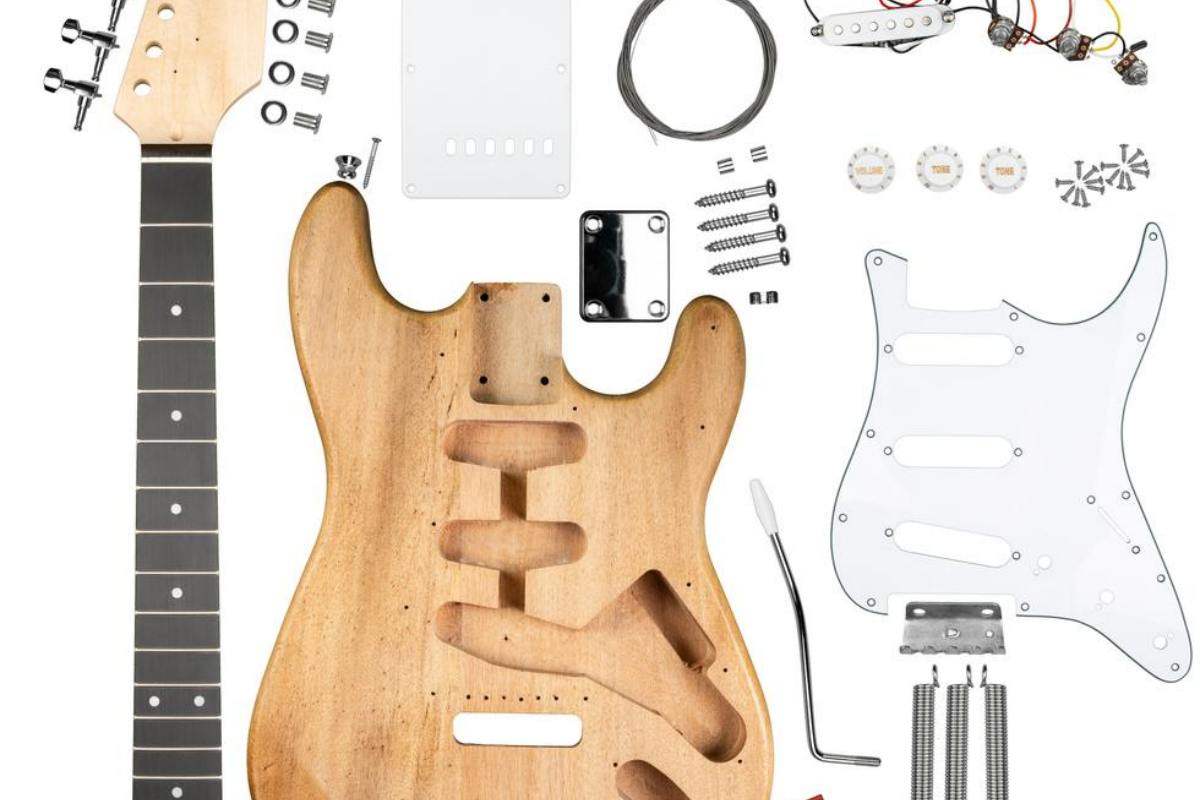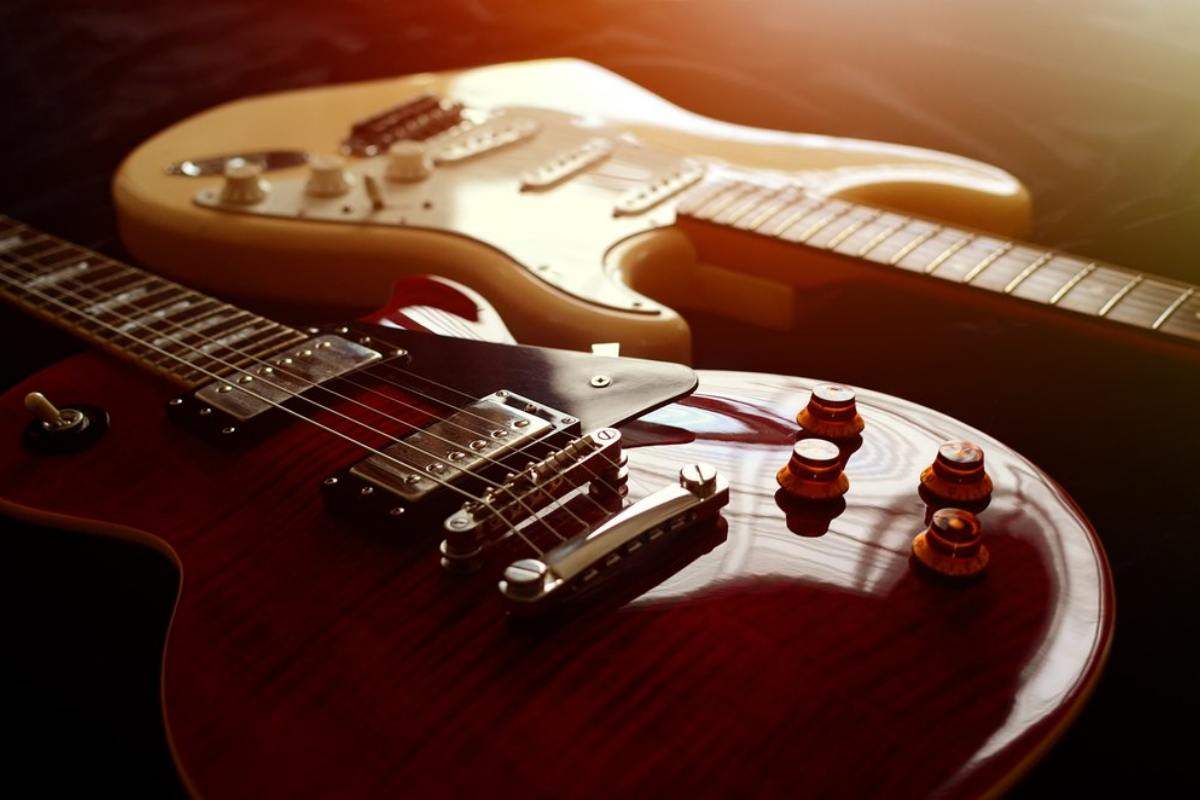You’re here because you’re a little curious about the history of the guitar. Although not necessary, there are many great guitarists out there who still don’t know how the instrument was discovered. So in this article, we’ll give you a background about how your favorite string instrument came to be.
A flexible instrument, the guitar blends in any setting. Be it a casual street performance or some live event at a wedding or any of those fancy occasions, the guitar certainly has that versatility. However, its history confuses many people as there are evidences tracing back to the Mesopotamian period to the 15th century. So which is which? Let’s discover its captivating history below.
Origin of Its Name
The “guitar” was coined from the ancient Greeks’ kithara. As the instrument traveled through various cultures and languages, it became the Arabic qitara and the Spanish guitarra before it became the guitar we know today.
Its History
 Photo by Duncan Kidd on Unsplash
Photo by Duncan Kidd on Unsplash
The guitar's history can be traced back to two ancient instruments: the oud and the lute, both predating written history.
Legend has it that Lamech, said to be Noah’s grandfather and the sixth descendant of Adam and Eve, played a pivotal role in the creation of the Arab precursor to the guitar. It is said that Lamech, inspired by a tragic event involving the loss of his son, designed the shape of the instrument known as an oud. When the Moors invaded Southern Spain in 711 AD, they brought the oud with them, contributing to its spread and influence in the region.
History of the Guitar’s Design
The lute, with its curved back, was prevalent during the Middle Ages. This instrument passed from the Egyptians to the Greeks and then to the Romans, eventually making its way to Europe.
The earliest pictorial record of a lute-like stringed instrument dates back to 3500 to 3200 BCE in Southern Mesopotamia, now known as Nasiriyah City in Iraq. An image depicting a female crouching on a boat with her hands positioned on the instrument indicates its early use.
Throughout Mesopotamian and Egyptian history, various long- and short-necked varieties of lutes appeared in pictorial records. Today, examples of these records can be found in renowned museums like the Metropolitan Museum of Art in New York and the British Museum.
By the end of the Renaissance, the lute had evolved significantly, often featuring up to 20 or 30 strings. However, the popularity of the lute-like shape began to wane. In the 15th and 16th centuries, musicians in Spain favored instruments with the familiar curved shape we now associate with guitars.
 Photo by Ben Collins on Unsplash
Photo by Ben Collins on Unsplash
The Modern Guitars
Today, the guitars we have come in different types and origins. If you want to uncover the history of the guitar in America, and how it has become one of the popular instruments played in the country and overseas, then read here.
Electric Guitar
The first commercially successful electric guitar was also invented by George Beauchamp (using the pickup just mentioned) who created the Electro A-22 electric lapsteel guitar, (which was nicknamed the "Frying Pan" due to its long neck and circular body) in 1931. The name was later changed to Rickenbacker Electro A-22.

Jazz guitarist, and all-around electronics wizzkid/genius inventor, Les Paul, invented the first solid-body electric guitar in 1941. He called his prototype "The Log", and added some wings to each side to make it look more like a conventional guitar. The prototype then went through many iterations with changes/improvements made by both Les Paul and the Gibson engineers before finally becoming the Les Paul guitar we all know and love which was released in 1952. You can read on and learn more about electric guitar history.

Acoustic Guitar
Although steel-stringed acoustic guitars are now a global standard, the credit for the history of the acoustic guitar on its invention is often attributed to Christian Frederick Martin, a German immigrant to the United States (1796-1867).
During his time, guitars typically used "catgut" strings made from sheep intestines. Martin, recognizing the discomfort of banjo players transitioning to the popular country music style, innovatively designed a guitar with steel strings. His new design involved structuring the guitar's inner framework to handle the increased tension of steel strings, marking a significant advancement in guitar technology.
 Photo by Chase Yi on Unsplash
Photo by Chase Yi on Unsplash
Guitar Over the Years
To this time, improvements have been consistently produced after the creation of the guitar. From capos to tuners and picks, let’s discover their purpose and how they can give you a memorable guitar-playing experience.
Capo
A capo is a handy accessory that clamps onto the neck of the guitar, allowing players to change the pitch of open strings without altering their tuning. It's particularly useful for adjusting the key of a song to match a singer's vocal range or for playing in different positions on the neck.
Tuners
Tuners are essential tools for keeping your guitar in tune. They can be standalone devices or built into pedals. Tuners work by detecting the pitch of each string and indicating whether it's in tune, sharp, or flat. This ensures your guitar sounds its best before practice, recording, or performance.
Pedals
Effects pedals, commonly referred to as guitar pedals, provide a diverse array of tonal options. This helps improve the guitar's sound by introducing effects like distortion, delay, reverb, or modulation. Musicians frequently utilize pedals to craft distinctive sounds and enrich their playing with unique textures.
Straps
Guitar straps provide comfort and stability while playing standing up. They attach to the guitar's strap buttons and rest on the player's shoulder, allowing for better control of the instrument's position. Straps come in various materials, widths, and designs to suit different preferences and playing styles.
Cables
Cables are significant to connect your guitar to an amplifier or other audio equipment. They transmit the signal from your guitar's pickups to the amplifier, ensuring clear and crisp sound reproduction. Quality cables with sturdy connectors help prevent signal loss and interference.
Guitar Picks
Guitar picks, also known as plectrums, are small, flat tools used to pluck or strum the strings. They come in various shapes, thicknesses, and materials, each offering a unique tone and playing experience. Picks allow for precise control and articulation of notes, making them essential for many guitarists. Other than that, picks also help guitarists who have sensitive skin.
Guitar Slides
Slides are tube-shaped accessories typically worn on the fingers to create smooth, gliding sounds on the guitar. They're commonly used in blues, rock, and slide guitar playing styles. Slides can be made of glass, metal, or ceramic, each producing distinct tones when pressed against the strings.
Strings
Guitar strings play a significant role in producing sound. Steel strings are common for most acoustic and electric guitars, providing bright tones and versatility. As for Nylon strings, they are used on classical guitars for their softer, mellow sound. Strings need regular replacement due to wear and tear, ensuring optimal sound quality and playability.
If you want to enhance your guitar-playing experience, come over to our shop and check out the exquisite designs that are suitable for you.
If you like this article, please share it!
Be sure to join our FB Group Guyker Guitar Parts & Accessories Community to share your ideas! You can also have connections with like-minded guitar players, Guyker updates as well as discounts information from our FB Group.




